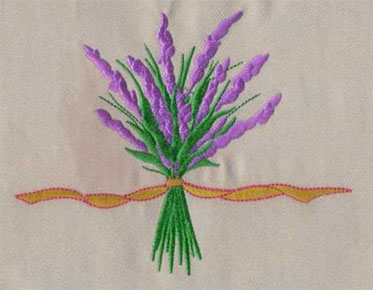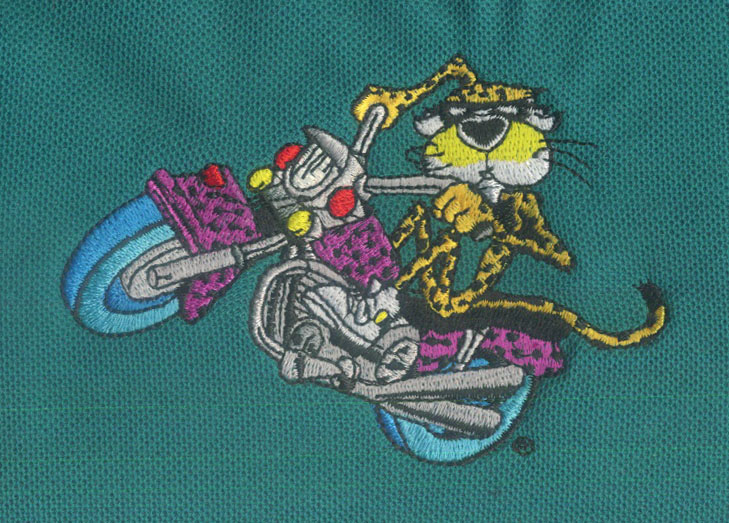Embroidery Reimagined: A Sustainable Journey into Upcycling and Eco-Friendly Stitching
In a world where sustainability is becoming increasingly vital, the art of embroidery is experiencing a transformative shift towards eco-friendly practices. One such sustainable approach gaining momentum is upcycling in embroidery. This blog explores the intersection of sustainability and embroidery, delving into the creative realm of repurposing materials, reducing waste, and fostering a greener embroidery community.
1. The Rise of Sustainable
Embroidery: A Stitch in Time
Embracing Eco-Friendly Values:
As awareness of environmental issues grows,
many embroiderers are adopting eco-friendly values. The shift towards
sustainability involves reconsidering traditional embroidery
practices and seeking alternative methods that leave a lighter footprint
on the planet.
Upcycling Defined:
Upcycling is the process of turning discarded
or unused items into something more valuable. In the context of embroidery,
this means repurposing materials to create new, unique pieces while reducing
the demand for new resources.
2. Materials Matter: Choosing Sustainable Fabrics
Vintage Fabrics:
Give new life to vintage fabrics sourced from
thrift stores or old garments. Vintage fabrics not only contribute to a unique
aesthetic but also prevent textiles from ending up in landfills.
Organic and Natural Fibers:
Opt for embroidery on organic and natural fibers like cotton, linen, or hemp. These materials have a lower environmental impact compared to conventional synthetic fabrics, as they are biodegradable and often produced with fewer chemicals.
3. Revitalizing Old Embroidery: A
Creative Revival
Embroidery Makeovers:
Breathe new life into old or unfinished
embroidery projects. By adding fresh stitches, altering designs, or
incorporating new elements, you can transform forgotten pieces into
contemporary works of art.
Repurposing Vintage Embroidery:
Explore the world of vintage embroidery patterns and reimagine them on modern pieces. Incorporating vintage designs into current projects adds a touch of nostalgia and honors the craftsmanship of bygone eras.
4. Waste Not, Want Not:
Minimizing Embroidery Waste
Thread Scraps for Texture:
Collect thread scraps and incorporate them
into your designs for added texture. This not only reduces waste but also
introduces an innovative and visually appealing element to your embroidery.
Creative Stitching Techniques:
Experiment with stitching techniques that make the most of small thread remnants. Techniques like couching or French knots can be employed to use up every bit of thread, minimizing waste in the process.
5. Sustainable Hoop Art: A Frame
for Conscious Crafting
Eco-Friendly Hoop Choices:
Opt for hoops made from sustainable materials
like bamboo or recycled plastic. Choosing eco-friendly embroidery hoops
contributes to a more sustainable crafting process.
Embroidery Hoop Decor:
Transform old embroidery hoops into decorative pieces. Paint them, wrap them with fabric scraps, or use them as frames for unique textile art. This not only reduces waste but also adds a touch of personal flair to your crafting space.
6. Collaborative Upcycling:
Community and Connection
Embroidery Swaps:
Participate in embroidery swaps where crafters
exchange materials, patterns, or finished pieces. This not only fosters a sense
of community but also encourages the reuse of embroidery-related items.
Workshops and Classes:
Join workshops or classes focused on sustainable embroidery practices. Collaborative learning spaces provide opportunities to share ideas, techniques, and resources for upcycling in embroidery.
7. Beyond the Craft Room:
Sustainable Embroidery in Everyday Life
Eco-Friendly Apparel Embellishments:
Extend the principles of upcycling to your
wardrobe by embellishing clothing with embroidered patches or repurposed
textiles. This adds a personalized touch while reducing the environmental
impact of fast fashion.
Sustainable Gift-Giving:
Create meaningful and sustainable gifts by embroidering on second-hand items or using eco-friendly materials. Thoughtful, handcrafted gifts not only showcase your embroidery skills but also contribute to a more sustainable gift-giving culture.
Conclusion: Stitching Towards a
Greener Tomorrow
Embroidery, with its
rich history and timeless appeal, is embracing sustainability through the art
of upcycling. By reimagining materials, repurposing vintage designs, and
minimizing waste, embroiderers can play a significant role in creating a more
sustainable crafting future. The journey towards eco-friendly embroidery is an invitation to unleash creativity, foster community, and
contribute to a world where every stitch tells a story of conscious crafting
and environmental stewardship. Join the movement, and let your embroidery
journey be a stitch in the fabric of a greener tomorrow.



